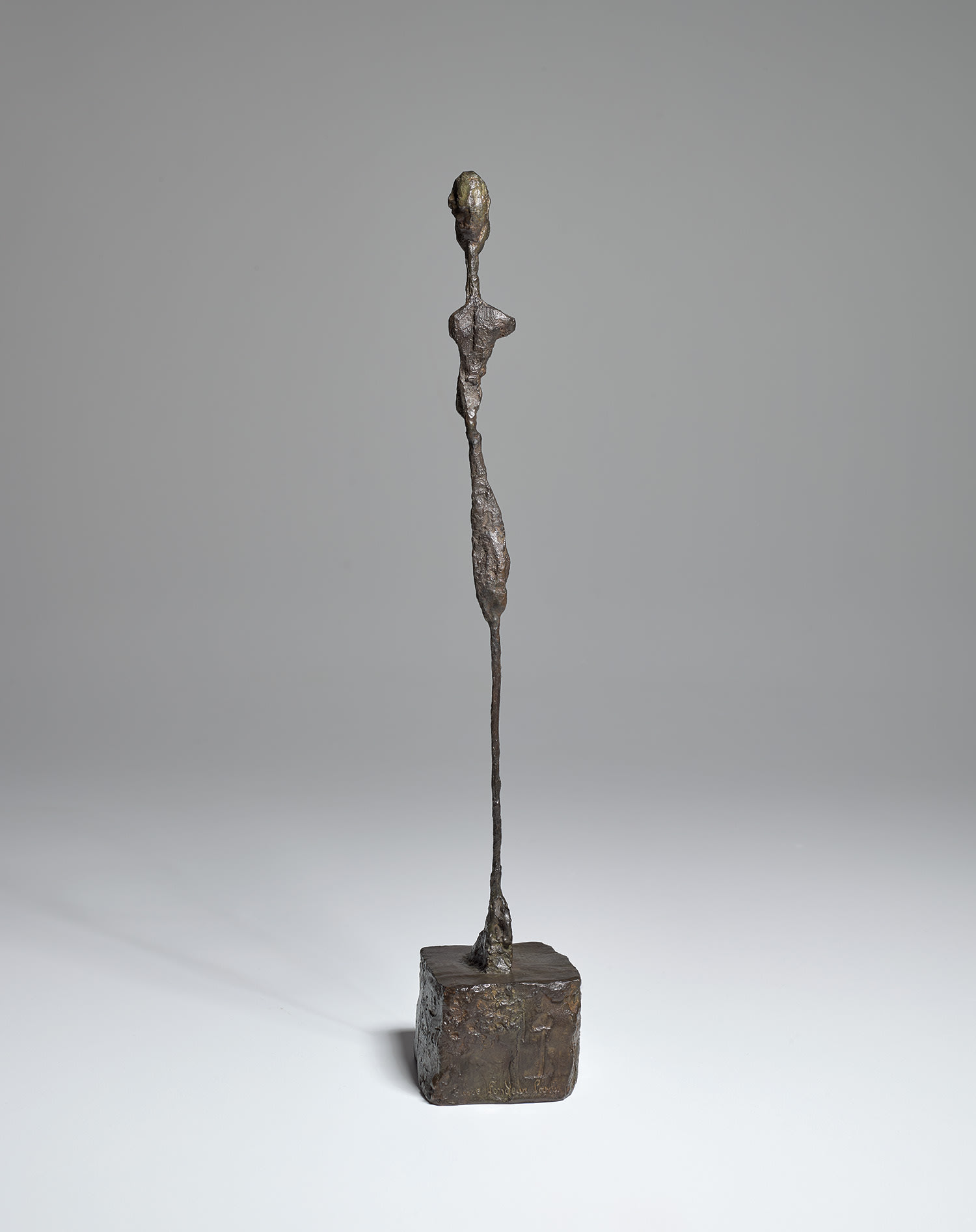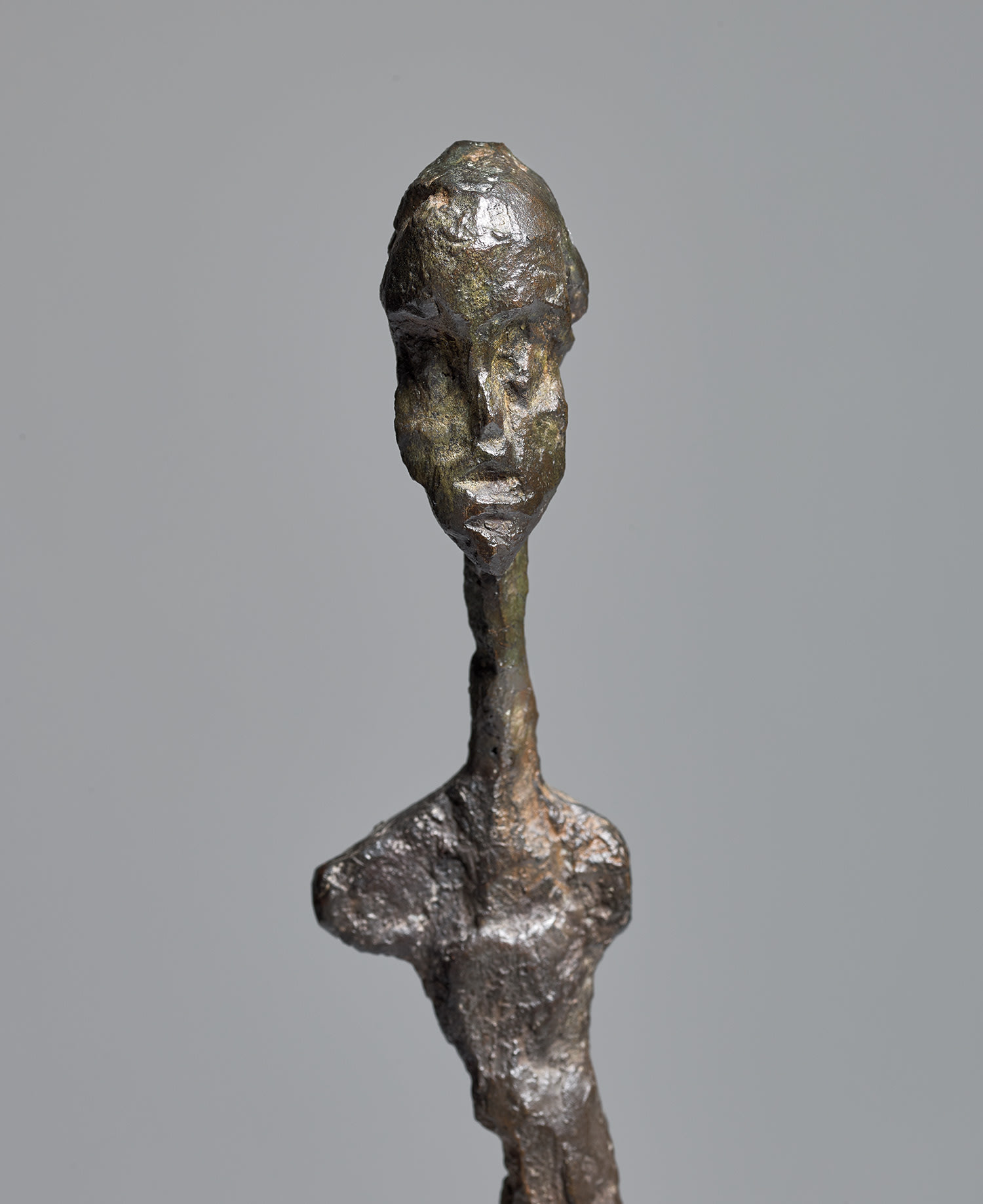





24
Alberto Giacometti
Femme debout
incised with the artist's signature and numbered 'Alberto Giacometti 7/8' on the right side of the base; further incised with the foundry mark 'Susse Fondeur Paris' on the reverse of the base; further stamped with the foundry mark 'Susse Fondeur Paris Cire Perdue' on the underside of the base
bronze
44.5 x 7.8 x 11.1 cm (17 1/2 x 3 1/8 x 4 3/8 in.)
Conceived circa 1961 and cast in bronze in 1993 by Susse Fondeur, Paris, this work is number 7 from an edition of 8 plus one 0 cast and a further Fondation Alberto et Annette Giacometti cast. This work is recorded in the Alberto Giacometti Database under no. 1953, and is accompanied by a certificate of authenticity from the Giacometti Committee.